The Neutralizer “Phase II”: Making Toxins Water Soluble for Exit

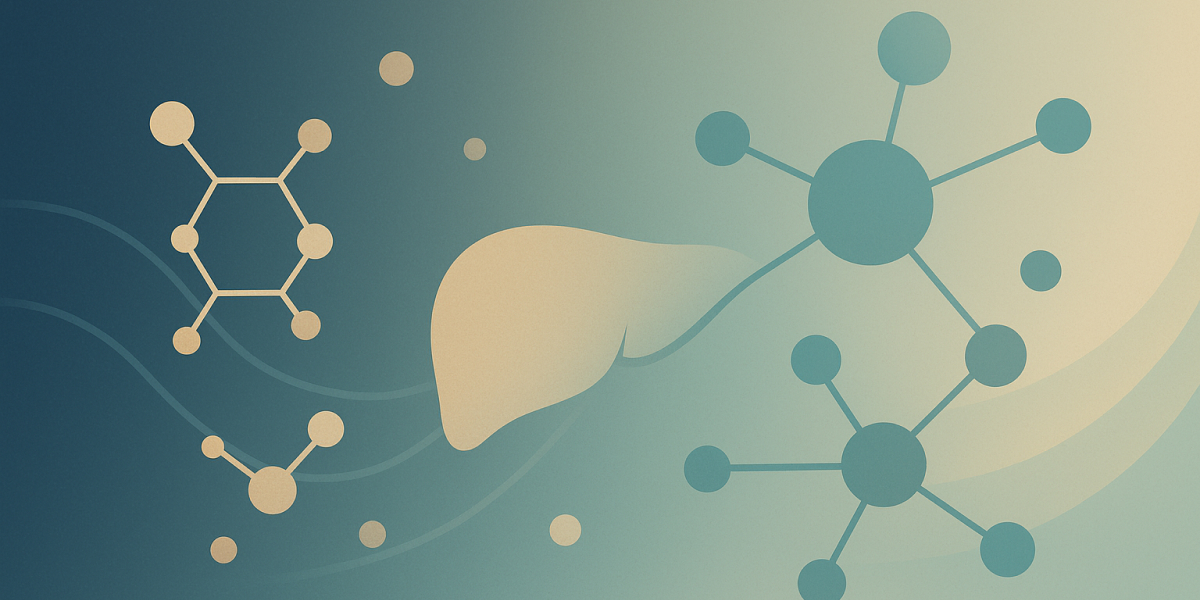
If Phase I is where toxins get activated and broken down, Phase II is where the real detoxification happens. This is where your body takes those reactive intermediates we talked about in the last article and neutralizes them. Phase II transforms dangerous compounds into harmless, water soluble molecules that can be easily eliminated from your body.
Think of Phase II as a packaging and labeling department. The reactive intermediates from Phase I are like hazardous materials that need special handling. Phase II attaches small molecular groups to these compounds, essentially putting "handles" on them so your body can grab them and escort them out. These attachments also make the compounds water-soluble, which is crucial because your body eliminates waste primarily through water-based systems like urine and bile.
This process is called conjugation, and it's one of the most important things your body does every single day. When Phase II is working well, those dangerous reactive intermediates from Phase I get quickly neutralized and prepared for elimination. When Phase II is sluggish or overwhelmed, those reactive compounds stick around causing damage.
The Six Main Conjugation Pathways
Your body has six primary ways to conjugate toxins in Phase II. Each pathway attaches a different type of molecular group, and each requires specific nutrients to function. Understanding these pathways helps you understand exactly what your body needs to detoxify effectively.
1. Glutathione Conjugation (GST Enzymes)
Glutathione is often called the master antioxidant, and for good reason. It's your body's most important detoxification molecule. Glutathione conjugation, carried out by a family of enzymes called glutathione S-transferases (GSTs), is the primary way your body neutralizes a huge range of toxins.
What it processes:
- Heavy metals (mercury, lead, cadmium)
- Pesticides and herbicides
- Environmental pollutants and industrial chemicals
- Medications and drug metabolites
- Carcinogens and toxic byproducts
- Oxidative stress and free radicals
What it needs to work:
- Glutathione itself, which your body makes from three amino acids: cysteine, glutamic acid, and glycine
- Selenium, which activates glutathione enzymes
- B vitamins (B6, B12, folate) for glutathione production
- Sulfur-containing foods that provide cysteine
Where you get it:
- Quality protein (eggs, fish, poultry, legumes) provides the amino acids
- Cruciferous vegetables (broccoli, cauliflower, kale) boost glutathione production
- Sulfur-rich foods (garlic, onions, eggs) provide cysteine
- Brazil nuts for selenium
Why glutathione supplementation often makes sense:
Unlike most Phase II pathways where food should be your primary source, glutathione is unique. Given the unprecedented toxic load we're all carrying (remember those 350,000 synthetic chemicals from Article 1?), many people simply can't produce enough glutathione to keep up with demand, even with an excellent diet.
This is one area where strategic supplementation can be genuinely beneficial, not as a replacement for good nutrition but as additional support. Common approaches include:
- Liposomal glutathione or reduced glutathione supplements (2-3 times per week or daily during high-stress periods)
- NAC (N-acetylcysteine), which provides the cysteine needed for your body to make its own glutathione
- Vitamin C, which helps regenerate glutathione after it's been used
- A combination approach (glutathione, NAC, and vitamin C together creates a powerful antioxidant stack)
This isn't about having genetic variants or diagnosed deficiencies. It's about recognizing that the demand on your glutathione system has never been higher in human history. Supporting it proactively makes sense for most people.
Genetic variants:The GST genes (GSTM1, GSTP1, GSTT1) are highly variable. Some people have deleted copies of GSTM1 or GSTT1, meaning they produce little to no functional enzyme from those genes. These individuals have significantly reduced capacity for glutathione conjugation and may be more vulnerable to environmental toxins, oxidative stress, and certain cancers. If you have these deletions, supporting your glutathione levels becomes even more critical.
2. Glucuronidation (UGT Enzymes)
Glucuronidation is the second major conjugation pathway, handled by UDP-glucuronosyltransferase (UGT) enzymes. These enzymes attach glucuronic acid to toxins, making them water-soluble and ready for elimination.
What it processes:
- Steroid hormones (estrogen, testosterone, progesterone)
- Bilirubin (breakdown product of red blood cells)
- Environmental chemicals and pollutants
- Many pharmaceutical drugs
- Food additives and preservatives
- BPA and other plasticizers
What it needs to work:
- UDP-glucuronic acid, which comes from glucose metabolism
- Magnesium as a cofactor
- B vitamins for enzyme function
- Adequate carbohydrates for glucuronic acid production
Where you get it:
- Complex carbohydrates from whole grains and vegetables
- Magnesium from leafy greens, nuts, seeds, and whole grains
- B vitamin-rich foods (eggs, fish, poultry, legumes)
Why this matters:Glucuronidation is especially important for hormone balance. If your UGT enzymes aren't working well, you can develop estrogen dominance because your body can't break down and eliminate estrogen efficiently. This is a major issue for many women dealing with PMS, heavy periods, fibroids, or breast health concerns.
The gut connection:Here's something critical: certain gut bacteria produce an enzyme called beta-glucuronidase that can actually REVERSE glucuronidation. This enzyme splits the glucuronic acid off the toxin, allowing it to be reabsorbed back into your body instead of being eliminated. This is called enterohepatic recirculation, and it's why gut health is so important for detoxification. Dysbiosis (imbalanced gut bacteria) can seriously impair your ability to eliminate toxins and excess hormones.
3. Sulfation (SULT Enzymes)
Sulfation, carried out by sulfotransferase (SULT) enzymes, attaches sulfur groups to compounds to neutralize them. This pathway is particularly important for hormone metabolism and neurotransmitter breakdown.
What it processes:
- Steroid hormones (especially estrogen)
- Thyroid hormones
- Neurotransmitters (dopamine, serotonin)
- Medications including acetaminophen (Tylenol)
- Food additives and artificial colors
- Environmental toxins
What it needs to work:
- Sulfur from dietary sources
- Molybdenum as a cofactor
- B vitamins (especially B6)
Where you get it:
- Sulfur-rich foods (garlic, onions, eggs, cruciferous vegetables)
- Molybdenum from legumes, whole grains, and leafy greens
- Quality animal protein provides sulfur amino acids
When it goes wrong:Some people have sluggish sulfation due to genetic variants in SULT genes or simply inadequate sulfur intake. This can lead to hormone imbalances, neurotransmitter issues, and sensitivity to medications like Tylenol. It can also cause problems with food additives and preservatives that rely on sulfation for elimination. People with poor sulfation often report sensitivity to sulfites in wine or dried fruits.
4. Methylation (COMT and Other Methyltransferases)
Methylation is one of the most talked about pathways in functional medicine, and for good reason and we covered this in The Methylation Gene Network: Beyond Just MTHFR and in the other four articles as part of this series. It's involved in hundreds of processes in the body, including Phase II detoxification. Methyltransferase enzymes, including COMT (catechol-O-methyltransferase), attach methyl groups to compounds to neutralize them.
What it processes:
- Catecholamines (dopamine, norepinephrine, epinephrine)
- Estrogen metabolites
- Heavy metals (arsenic, mercury)
- Histamine
- Certain medications
- Environmental toxins
What it needs to work:
- Methyl groups donated by SAMe (S-adenosylmethionine)
- Folate (vitamin B9) to create methyl groups
- B12 to support the methylation cycle
- Betaine (trimethylglycine or TMG) as a methyl donor
- Choline for methylation support
- Magnesium as a cofactor
Where you get it:
- Folate from leafy greens, legumes, and liver
- B12 from animal products (meat, fish, eggs, dairy)
- Choline from eggs (especially the yolks), liver, and fish
- Betaine from beets, quinoa, and spinach
The MTHFR story:MTHFR (methylenetetrahydrofolate reductase) is probably the most famous gene variant in functional medicine. MTHFR converts folate into its active form, 5-methyltetrahydrofolate (5-MTHF), which is essential for the methylation cycle. People with certain MTHFR variants (C677T and A1298C) have reduced enzyme activity, meaning they don't produce methyl groups as efficiently.
This can impact detoxification, but it also affects neurotransmitter metabolism, DNA synthesis, cardiovascular health, and much more. If you have MTHFR variants, you may benefit from methylated B vitamins (5-MTHF instead of folic acid, and methylcobalamin instead of cyanocobalamin).
COMT variants:COMT breaks down catecholamines like dopamine and epinephrine. Some people have a fast COMT (Val/Val genotype) and break down these neurotransmitters quickly. Others have a slow COMT (Met/Met genotype) and break them down slowly. Slow COMT can lead to higher levels of stress hormones and estrogen metabolites hanging around longer. These individuals often feel more anxious and stressed and may benefit from extra methylation support.
5. Acetylation (NAT Enzymes)
Acetylation, carried out by N-acetyltransferase (NAT) enzymes, attaches acetyl groups to toxins. This pathway is less talked about but still important.
What it processes:
- Aromatic amines (from tobacco smoke, cooked meats, dyes)
- Sulfonamide antibiotics
- Isoniazid (tuberculosis medication)
- Hydralazine (blood pressure medication)
- Environmental chemicals
What it needs to work:
- Acetyl-CoA (derived from glucose and fat metabolism)
- B vitamins (especially B5/pantothenic acid)
- CoA synthesis requires cysteine
Where you get it:
- B5 from meat, fish, eggs, whole grains, and avocados
- Cysteine from protein-rich foods
Genetic variants:NAT enzymes come in fast and slow variants. NAT2 is particularly variable. Slow acetylators have increased risk of side effects from certain medications and may have higher cancer risk from aromatic amine exposure (smoking, charred meats). Fast acetylators process these compounds more quickly but may have other health trade-offs.
6. Amino Acid Conjugation
This pathway attaches amino acids (primarily glycine, taurine, or glutamine) to toxins to neutralize them.
What it processes:
- Benzoate (from preservatives)
- Salicylates (from aspirin and many plants)
- Bile acids
- Environmental chemicals
What it needs to work:
- Glycine (the most common amino acid used)
- Taurine (particularly for bile acid conjugation)
- Adequate protein intake
Where you get it:
- Glycine from bone broth, collagen, gelatin, and meat
- Taurine from seafood, meat, and eggs
- Quality protein from any source
Why glycine matters:Glycine is the simplest amino acid, and your body uses a LOT of it for detoxification, collagen production, and neurotransmitter synthesis. Many people don't get enough glycine from their diet. This is one reason why bone broth and collagen supplements have become popular in the functional medicine world. They're rich sources of glycine that support this conjugation pathway.
When Phase II Can't Keep Up
The biggest problem with Phase II is when it gets overwhelmed or doesn't have the nutrients it needs to function. Remember from Article 2 that Phase I creates reactive intermediates. If Phase II is sluggish, those reactive intermediates accumulate and cause damage.
Signs your Phase II might need support:
- Chemical sensitivities or reactions to fragrances, cleaning products, or other environmental exposures
- Adverse reactions to medications or supplements
- Hormone imbalances (estrogen dominance, PMS, heavy periods)
- Chronic fatigue despite adequate sleep
- Brain fog and difficulty concentrating
- Skin issues (acne, eczema, rashes)
- Difficulty losing weight
- Heightened stress response or anxiety
- Histamine intolerance
These symptoms don't prove that Phase II is impaired, but they're consistent with detoxification issues and warrant attention.
The Nutrient Density Connection
Here's what becomes obvious when you study Phase II: every single pathway depends on nutrients from food. Amino acids from protein. B vitamins from whole foods. Minerals like selenium, magnesium, and molybdenum. Sulfur from cruciferous vegetables and eggs. Methyl donors from leafy greens and animal products.
You cannot supplement your way out of a terrible diet. Phase II requires a foundation of nutrient-dense, whole foods. The same foods that support Phase I also support Phase II. Quality protein, colorful vegetables, healthy fats, and mineral-rich foods.
This is why extreme low-protein diets or juice cleanses often make people feel worse. You're not giving your body the raw materials it needs to actually detoxify. You might be reducing toxic inputs (which is good), but you're also starving the detox pathways of what they need to function.
Supporting Phase II: The Fundamentals
Just like with Phase I, supporting Phase II comes down to fundamentals:
Eat adequate protein: Your conjugation pathways literally run on amino acids. Aim for at least 0.7 to 1 gram of protein per pound of ideal body weight, from quality sources.
Load up on cruciferous vegetables: Broccoli, cauliflower, Brussels sprouts, kale, cabbage, and bok choy support multiple Phase II pathways, especially glutathione and sulfation.
Include sulfur-rich foods daily: Garlic, onions, eggs, and cruciferous vegetables provide the sulfur your body needs for glutathione production and sulfation.
Get your B vitamins from food: Eggs, fish, poultry, legumes, leafy greens, and liver are all excellent sources. If you have MTHFR variants, consider methylated B vitamin supplements.
Don't fear healthy carbs: Your glucuronidation pathway needs glucose to make glucuronic acid. Whole grains, starchy vegetables, and fruits support this pathway.
Support your gut health: Remember that gut bacteria can reverse glucuronidation and send toxins back into circulation. Fiber, fermented foods, and probiotics support a healthy microbiome.
Consider targeted support: If you have genetic variants affecting specific pathways (GSTM1 deletion, MTHFR variants, slow COMT), you may benefit from targeted supplementation like NAC for glutathione, methylated B vitamins, or SAMe for methylation support.
Stay hydrated: Phase II makes toxins water-soluble so they can be eliminated. You need adequate water for this to work.
The Critical Bridge
Phase II is the bridge between activation (Phase I) and elimination (Phase III). It's where reactive, dangerous compounds become neutral, water-soluble molecules ready to leave your body. Without efficient Phase II function, the entire detoxification system breaks down.
In the next article, we'll explore Phase III, where those conjugated compounds actually get transported out of your cells and eliminated from your body. We'll also dive into the antioxidant defense systems that protect you from the oxidative stress created during this whole process.
But for now, understand this: Phase II is where the real detoxification happens. It's where your body needs the most nutritional support. And it's where strategic intervention, based on your genetics and symptoms, can make the biggest difference in how you feel.



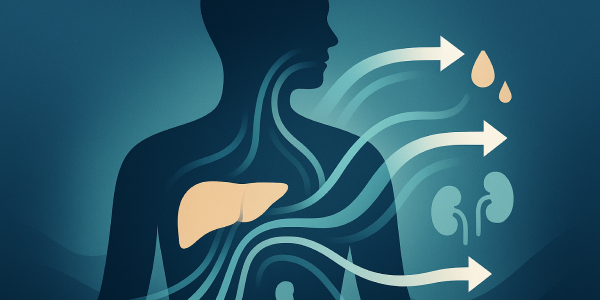
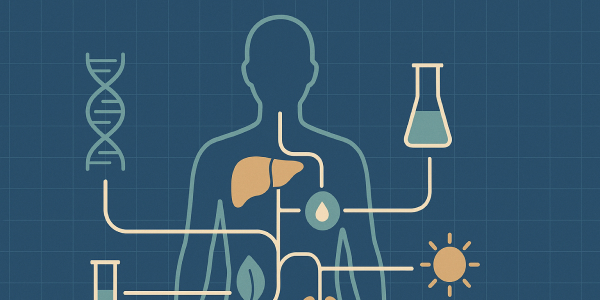


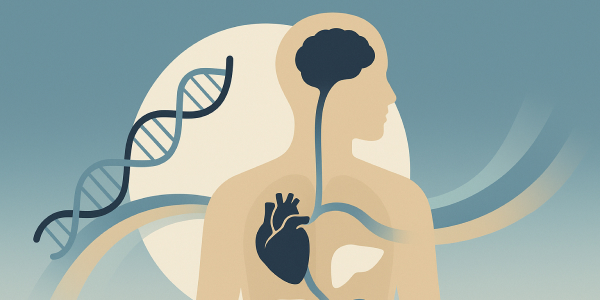
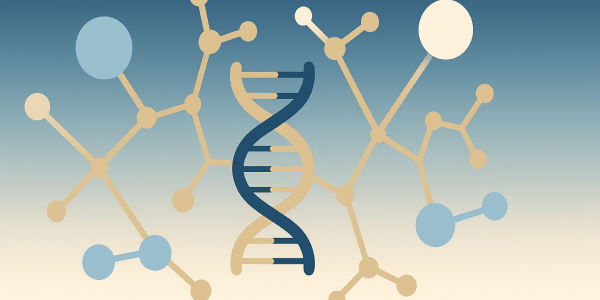

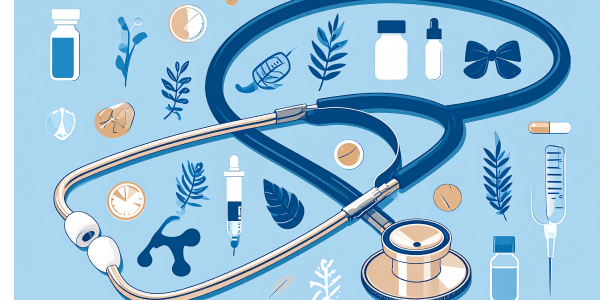
.svg)